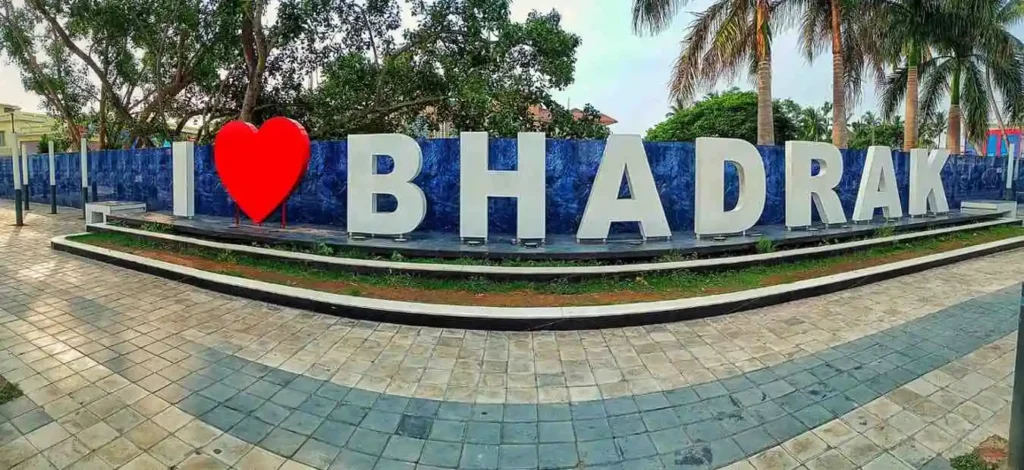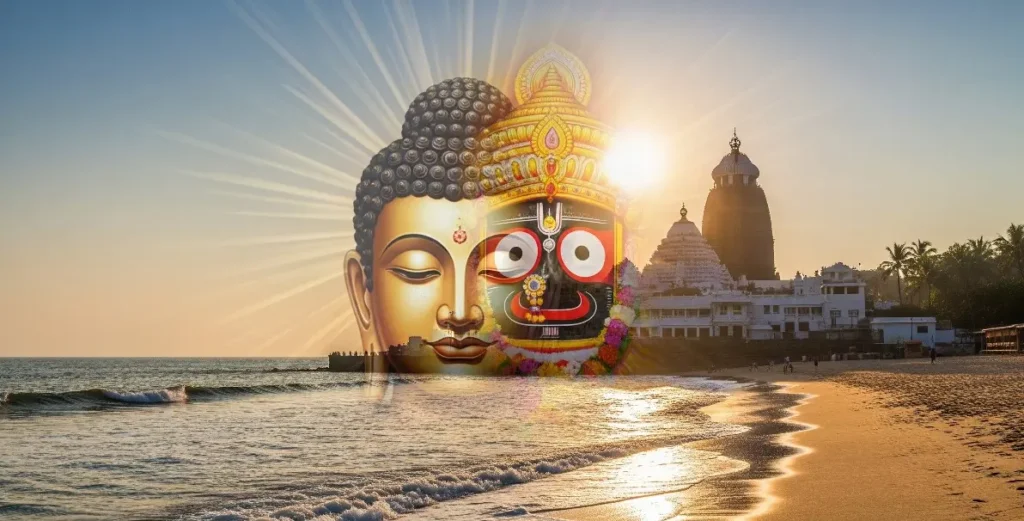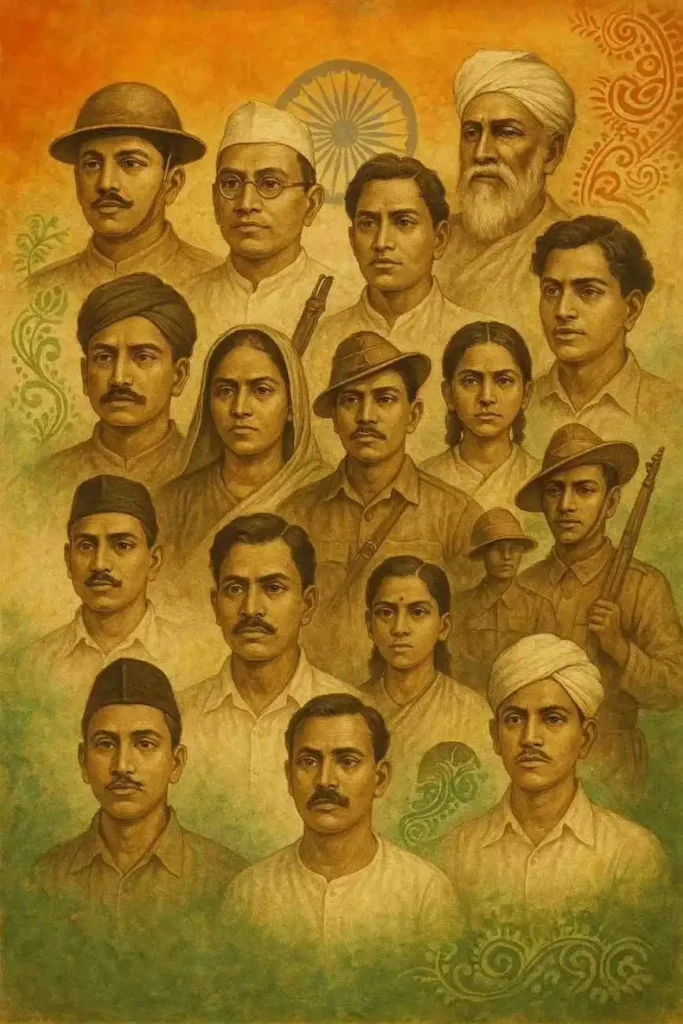
Introduction: Discovering Bhadrak’s Legacy
Ancient History of Bhadrak: A Land of Legends
Ancient History of Bhadrak: A Land of Legends
Influence of the Kalinga Empire in Bhadrak
Medieval & Mughal Rule in Bhadrak
Bhadrak’s Role in India’s Freedom Struggle
The Salt Satyagraha & Civil Disobedience Movement
The Eram Massacre: Odisha’s Jallianwala Bagh
List of Martyrs of the Eram Massacre in Bhadrak
1. The Balabhadra Kshetra Theory
2. Jainism and the Bhaddiya-Katak Connection
3. The Bhadranath and Sung Dynasty Connection
Dr. Pravat Kumar Mohanty, in his doctoral research, proposed another plausible theory. He suggested that Bhadrak may have been named after a significant historical figure or ruler connected to the land. Inscriptions found in Bhadrak mention an individual named Bhadranath, which aligns with the legend of Goddess Bhadrakali.
Additionally, historical texts like The Bhagavad mention a lineage of ten kings from the Sung dynasty who ruled over Magadha in Kaliyuga, with Bhadrak being the fifth king. Odisha’s trade connections with South East Asia via ports like Churamani (Chudamani) and Dhamara further validate this link.
Bhadrak’s Cultural and Religious Legacy
Discover Bhadrak’s History: A Glimpse Into the Past
Prehistoric Whispers and Ancient Echoes:
While the fertile plains of Bhadrak, nourished by numerous rivers, have concealed much of its prehistoric past under layers of clay and sand, glimpses into the lives of early inhabitants have been unearthed in the upper streams of the Nilgiri subdivision, Mayurbhanj, and Keonjhar. Palaeo-relics discovered here hint at the cultural morphology and gradual development of early settlements. The challenge of locating more prehistoric evidence remains, perhaps hidden within the sand hill formations, awaiting dedicated research to further illuminate Bhadrak’s lower Paleolithic complex. Mesolithic artifacts, crafted from locally available stones, have also been found in the Nilgiri subdivision, offering further insights into the lives of our ancestors.
The ancient history of Bhadrak is intertwined with the mighty Kalinga Empire. The epic Mahabharata mentions the Kalinga tribe residing in this region, traversed by the sacred Baitarani River. This is corroborated by accounts from Megasthenes (4th Century BC) and Pliny (1st Century AD), solidifying Bhadrak’s place within the vast Kalinga dominion. The empire’s influence, particularly during the reign of the Mahameghavahana dynasty and the Kalinga ruler Kharavela, extended far and wide. Over time, the Kalinga empire’s power waned, and Bhadrak found itself part of different kingdoms. Utkal, a territory north of Kalinga, is mentioned in Kalidas’ Raghuvamsa, suggesting a distinct identity for the region.
A Tapestry of Rulers and Dynasties:
The earliest surviving stone inscription in Bhadrak, dating back to the 2nd/3rd Century AD, references Maharaja Surasarma and Goddess Parna Devi, an early name for Bhadrak. By the end of the 6th Century AD, copper plate grants refer to Uttar (Northern) Toshali, which included Bhadrak. The Bhaumakars (736-931 AD) unified Uttar and Dakshin (Southern) Toshali (covering both Utkal and Kalinga), ruling it as Utkal.
Maharaja Sambhuvyasas of the Mana Dynasty assumed control of North Toshali after the decline of the Mahameghavahana dynasty. The Soro Copper plates (580 AD and 603 AD) are testaments to his reign. Sambhuvyasas, a devout Shaivite, expanded his kingdom, eventually conquering southern Toshali and establishing his capital at Jajpur.
During the 7th Century AD, the renowned Chinese traveler Hiuen Tsang journeyed through Odisha (Odradesh), traversing Bhadrak on his way to Buddhist sites like Lalitgiri and Ratnagiri. His accounts indicate that Bhadrak was part of the vast empire of King Harsha Vardhana.
From the 13th to the 16th centuries, Bhadrak flourished under the Ganga and Surya dynasties. Odisha was divided into 31 “Dandapats” during the Ganga rule, with Bhadrak holding a prominent position. This prominence continued under the Surya dynasty. The revered Sri Chaitanya visited Bhadrak during the reign of King Prataprudra Deva of the Bhoi dynasty, leaving behinvisitd a piece of his bedding at the Madan Mohan temple in Santhia, a testament to his .
A Crossroads of Empires:
Bhadrak’s strategic location on the grand trunk road connecting Calcutta and Madras made it a battleground for various powers vying for control. In the 16th century, Odisha faced turbulent times. Moreover, the conflict between Gajapati Mukunda Harichandran and the ruler of Bengal, Suleman Karani, culminated in a battle at Gohiritikiri (near Dhamnagar), where Mukunda Dev was defeated and killed. Consequently, this marked a turning point in Odisha’s history, leading to its loss of independence.
From 1568 to 1578, Bhadrak was under Afghan rule. Following Suleman Karrani’s death, his son Daud declared independence from the Mughal Empire. As a result, a war with Akbar ensued, which led to Daud’s defeat and Odisha becoming a separate Subah under Mughal rule. Akbar divided Odisha into three Sarkars: Cuttack, Jaleswar, and Bhadrak.
Subsequently, Daud’s rebellion against the Mughals resulted in further conflict. According to the Ain-i-Akbari, Daud assassinated Nazir Bahadur in 1577. In retaliation, Akbar sent his forces, leading to Daud’s defeat and death. Thus, Odisha came under direct Mughal rule.
The late 16th and early 17th centuries saw continued power struggles between the Mughals and the Afghans. Eventually, Akbar’s commander, Mansingh, subdued the Afghans in 1592, consolidating Mughal control over Odisha.
Despite the turmoil, Bhadrak prospered through agriculture, trade, and craftsmanship. Furthermore, the establishment of the Sadabarta Matha under Mansingh’s patronage provided shelter to pilgrims. Finally, under Mughal rule, the Bhadrak Sarkar was divided into “mohalas” for administrative efficiency, a system continued during the Maratha period.British Influence and the Seeds of Freedom:
In 1803, the British East India Company ousted the Marathas and took control of Odisha. Bhadrak, along with Balasore, initially fell under the Cuttack division. Recognizing Bhadrak’s strategic importance, the British established a sub-cantonment in 1805. In 1828, Balasore became a separate district, with Bhadrak as a subdivision.
The British administration also focused on infrastructure development. The Calcutta-Puri highway, which previously ran on the eastern side of the present highway, was straightened, leading to the development of new markets and settlements. Bridges were constructed over the Salandi River to facilitate travel and trade.
The winds of change began to blow with the rise of the Indian freedom movement. Mahatma Gandhi’s visit to Bhadrak in 1921 ignited the spirit of nationalism in the region. Bhadrak actively participated in the Non-Cooperation Movement, with many students leaving their studies to join the struggle for independence. Nationalist schools were established to provide education to these young volunteers.
Sacrifices and Triumphs of the Freedom Struggle:
Bhadrak’s contribution to the freedom struggle is etched in the annals of Indian history. In addition, the Eram and Lunia incidents stand as poignant reminders of the sacrifices made by the region’s brave sons and daughters. The Lunia incident, which occurred on September 22, 1942, saw nine freedom fighters martyred at the hands of the British police. Moreover, just a week later, the tragic Eram incident, often referred to as the “second Jallianwala Bagh,” took place. Specifically, on September 28, 1942, British forces opened fire on a gathering of freedom fighters at Eram, killing 29 people. Consequently, these events fueled the flames of resistance and solidified Bhadrak’s commitment to the cause of independence.
Bhadrak’s journey through time is a testament to its enduring spirit. From its prehistoric roots to its pivotal role in the freedom struggle, the district’s history reflects the ebb and flow of empires, the resilience of its people, and their unwavering pursuit of freedom and justice. Today, Bhadrak stands as a symbol of this rich heritage, a place where the echoes of the past resonate in the present, inspiring future generations to build a brighter tomorrow.
Moreover, Bhadrak’s past serves as a reminder of the sacrifices made by countless individuals in their quest for freedom. The courage and resilience demonstrated by the people of Bhadrak continue to inspire generations to come. Today, the district remains a beacon of hope and strength, with its rich history serving as a foundation for a promising future.Offbeat Places to Visit in Bhadrak: The Road Less Traveled
Spiritual Sojourn: Ancient Temples and Sacred Sites
- Agarpada Jagannath Temple & Anant Mahadev Jew Temple: These twin temples at Agarpada offer a unique blend of architectural styles and religious significance. In particular, the Jagannath Temple, dedicated to Lord Jagannath, reflects the typical Odia style, while the adjacent Anant Mahadev Temple, devoted to Lord Shiva, showcases a distinct architectural character.
- Lord Ananta Temple at Anapal: Nestled in the serene village of Anapal, this temple dedicated to Lord Ananta (Vishnu) is a testament to the region’s rich religious heritage. Furthermore, the intricate carvings and peaceful ambiance make it a must-visit for those seeking tranquility.
- Sindhukeswar Shiva Temple at Anja: This ancient Shiva temple at Anja is a fine example of Kalingan architecture. Additionally, the temple’s intricate carvings and serene surroundings create a mystical atmosphere.
- Akhandalamani at Aradi: One of the most revered shrines in Odisha, the Akhandalamani Temple at Aradi is dedicated to Lord Shiva. Notably, the temple draws devotees from far and wide, especially during festivals.
- Temple of Bhadrakali at Bhadrakali Village: Dedicated to the fierce goddess Bhadrakali, this temple is a significant Shakti Peetha. In addition, the temple’s vibrant atmosphere and the deity’s powerful presence make it a unique spiritual experience.
- Ghanteswar at Chattarpur: This temple, known for its unique collection of bells (ghanta), is a popular pilgrimage site. Consequently, the rhythmic chiming of the bells creates a mesmerizing ambiance.
- Nayakani Temple at Nayakani: This temple, though lesser known, holds its own charm. Moreover, the local legends and the serene environment surrounding the temple make it a worthwhile visit.
Whispers of the Past: Archaeological Delights
- Kaupur: A treasure trove of ancient sculptures, Kaupur is a must-visit for history buffs. **Specifically**, the 7th to 13th-century AD stone sculptures found here offer insights into the region’s artistic and cultural development.
- Khariapada: For those interested in Buddhism, Khariapada is a significant site. **Moreover**, the presence of Mahayanic cult remnants here indicates the influence of Buddhism in the region during ancient times.
- Gohiratikiri: This site is important for its Buddhist history. **In addition**, exploring this area can provide insights into the spread of Buddhism in the region.
Nature's Embrace: Beaches, Ports, and Scenic Beauty
- Boitapada: A historical port, Boitapada, is believed to have been a hub of ancient sea trade. While time has weathered its past glory, the location still provides an evocative glimpse into the maritime history of the region.
- Chandbali: Known for its bustling port and serene beach, Chandbali offers a blend of natural beauty and maritime activity. Watching the fishing boats set sail and return with their catch is a captivating experience.
- Chudamani & Dhamra: These fishing ports offer a glimpse into the lives of local fishermen. Observe the traditional fishing practices and enjoy the fresh seafood delicacies.
- Kanika Sea Beach: This pristine beach offers a tranquil escape from the city’s hustle and bustle. Enjoy the sun, sand, and the soothing sound of the waves.
Planning Your Offbeat Bhadrak Adventure:
Bhadrak’s offbeat destinations offer a unique travel experience. Whether you are a history enthusiast, a nature lover, or a spiritual seeker, Bhadrak has something to offer everyone. When planning your trip, remember to research local transportation options and consider the best time to visit based on weather conditions and local festivals. Embrace the spirit of adventure, explore the hidden gems, and create memories that will last a lifetime.
Bhadrak’s charm lies in its simplicity and authenticity. It’s a place where you can connect with nature, immerse yourself in history, and experience the rich cultural heritage of Odisha. So, pack your bags, venture off the beaten path, and discover the hidden treasures of Bhadrak!


